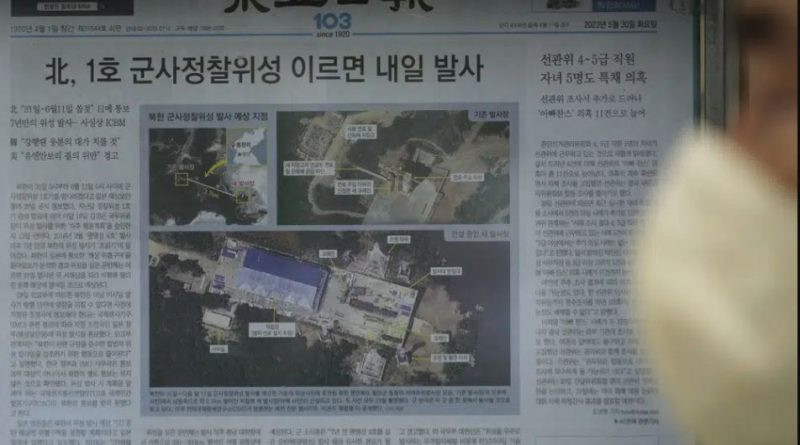North Korea says it will launch its first military spy satellite in June
Seoul (AP) — North Korea said Tuesday it would launch its first military spy satellite in June and described space-based reconnaissance as crucial for monitoring the United States’ “reckless” military exercises with South Korea.
The statement came a day after North Korea notified Japan’s coast guard that the launch, sometime between May 31 and June 11, might affect waters in the Yellow Sea, East China Sea and east of the Philippines’ Luzon Island. Japan’s defense minister warned its forces to shoot down the satellite or debris, if any entered Japanese territory, and its coast guard issued a safety warning for ships that would be in the affected seas during the expected launch, citing a risk of falling debris.
While North Korea’s rivals have condemned the country’s planned launch as a banned test of ballistic missile technology, it’s less clear whether the satellite itself is advanced enough to support the North’s stated goals of tracking and monitoring U.S. and South Korean military activities in real time.
The pace of both North Korea’s weapons testing and the U.S.-South Korean joint military exercises increased in past months in a cycle of tit-for-tat.
In comments published by North Korean state media, senior military official Ri Pyong Chol criticized the combined U.S.-South Korean military exercises, which Pyongyang has long described as invasion rehearsals. He said North Korea considers space-based reconnaissance “indispensable” to monitor the military exercises.
Last week, the South Korean and U.S. militaries conducted large-scale live-fire drills near the border with North Korea — the first of five rounds of exercises marking 70 years since the establishment of their alliance. Washington and Seoul describe their regular military exercises as defensive and have expanded their training since 2022 to cope with the North’s evolving threats.
Ri said the expanding U.S.-South Korean drills and other military activities underline their “sinister intention” to prepare for preemptive military action against North Korea. He said the “dangerous military acts by the U.S.” and its forces created a concerning security environment that makes it necessary for Pyongyang to gather real-time, reliable information on military movements in the region.
South Korea has warned that North Korea will face consequences if it goes ahead with the satellite launch in violation of United Nations Security Council resolutions, which ban the North from conducting any launch using ballistic technology. Space-launch vehicles for satellites share core technologies with long-range missiles that are built to deliver warheads aimed at destroying intercontinental targets.
“It’s absurd to use our legitimate joint exercises, and the maintenance of the South Korea-US joint defense posture to respond to advancing North Korean nuclear and missile threats, as an excuse to launch a reconnaissance satellite,” South Korean Foreign Ministry spokesperson Lim Soo-suk said during a briefing.
“We strongly urge North Korea to immediately cancel its launch plans.”
Last week, South Korea launched its first commercial-grade satellite, which experts say could provide Seoul with key technology and expertise to place its first military spy satellite into orbit later this year and build more powerful missiles.
Han Sung Geun, spokesperson of South Korea’s Joint Chiefs of Staff, said during a briefing that the South Korean and U.S. militaries were closely watching North Korea over the possible satellite launch and other provocative military moves. He did not provide specific assessments about the potential capabilities of the North Korean satellite and refused to say whether the South Korean military was preparing for the possibility that debris could fall in nearby waters.
Spy satellites are among an array of high-tech weapons systems North Korean leader Kim Jong Un has publicly vowed to develop. Other weapons systems on his wish list include solid-propellant intercontinental ballistic missiles, nuclear-powered submarines, hypersonic missiles and multi-warhead missiles.
North Korea placed Earth-observation satellites in orbit in 2012 and 2016, though their capabilities have been questioned.
Foreign experts say the earlier satellites never transmitted imagery back to North Korea, and analysts say the new device displayed in state media in recent weeks appeared too small and crudely designed to process and transfer high-resolution imagery.
Since the start of 2022, North Korea has test-fired about 100 missiles, including ICBMs designed to reach the U.S. mainland and a slew of launches it described as simulated nuclear attacks on targets in South Korea. North Korea has said its intensified testing activity is meant to counter its rivals’ joint military exercises as it continues to use those drills as a pretext to advance its arsenal of nuclear-capable weapons.



